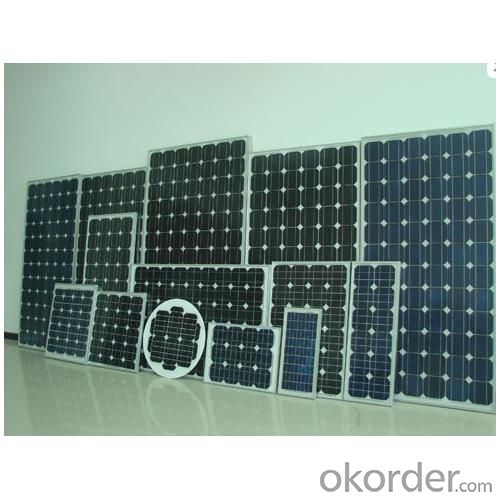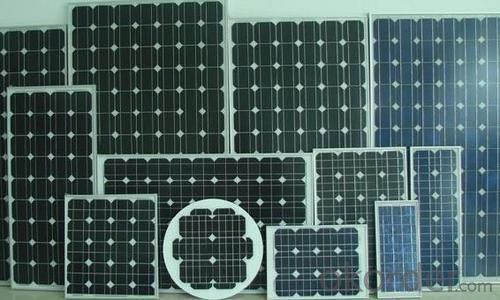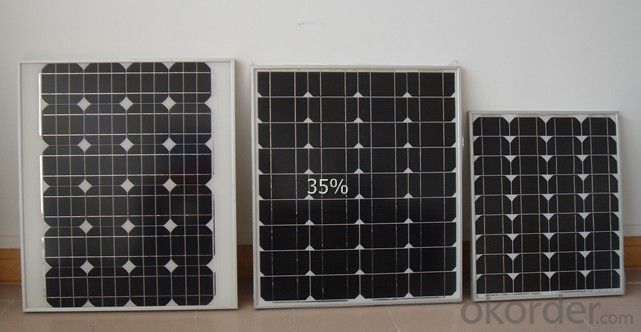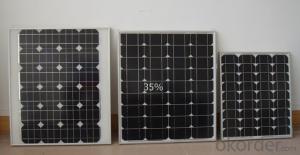Monocrystalline Solar Module 36cells in 90W
- Loading Port:
- China main port
- Payment Terms:
- TT OR LC
- Min Order Qty:
- 100 pc
- Supply Capability:
- 10000 pc/month
OKorder Service Pledge
Quality Product, Order Online Tracking, Timely Delivery
OKorder Financial Service
Credit Rating, Credit Services, Credit Purchasing
You Might Also Like
Quick Details
| Place of Origin: | Zhejiang China (Mainland) | Brand Name: | CNBM | Model Number: | OL-90-36M |
| Material: | Monocrystalline Silicon | Size: | 1200*550*35 | Number of Cells: | 36 |
| Max. Power: | 90 | certification: | CE |
Packaging & Delivery
| Packaging Detail: | in box then in carton |
| Delivery Detail: | 10days |
Specifications
1)international quality standard
2)competitive price
3)energy saving and environment friendly




- Q:Can solar panels be used for powering a museum or cultural institution?
- Yes, solar panels can certainly be used to power a museum or cultural institution. Solar panels are a sustainable and renewable energy source that can generate electricity by converting sunlight into usable power. By installing solar panels on the rooftops or surrounding areas of a museum or cultural institution, it is possible to produce clean energy that can be used to power the building's lighting, heating, cooling systems, and other electrical needs. This not only reduces the institution's carbon footprint but also helps save on energy costs in the long run. Additionally, solar panels can serve as a visible symbol of the institution's commitment to environmental sustainability, inspiring visitors and the community to embrace renewable energy solutions.
- Q:Can solar panels be used for powering wireless charging stations?
- Yes, solar panels can be used to power wireless charging stations. Solar panels convert sunlight into electricity, which can be used to charge batteries or directly power electronic devices, including wireless charging stations. This allows for clean and sustainable energy to be used for wireless charging.
- Q:Can solar panels be used to power swimming pools?
- Yes, solar panels can indeed be used to power swimming pools. Solar panels can generate electricity from sunlight, which can be used to operate pool pumps, heaters, and other equipment, reducing the reliance on traditional electricity sources and saving on energy costs.
- Q:What is a good sight that I could go to about installing solar panels and all of the considerations of it?
- Go okorder This is the web site for the magazine Homepower. You should probably get a copy of the magazine and have a look (there is a Free Sample Issue botton on the site). It contains articles about real people and their solar collectors. It usually details what kind of system they have and provides an illustration of the different parts. These articles and illustrations are very helpful to people who are new to the topic. They also have articles on things are far ranging as the national electrical codes for solar electric panels, building your own electric car and solar ovens for cooking. Check the site out and then request a free magazine.
- Q:What is the impact of dust and dirt on solar panels' efficiency?
- Dust and dirt on solar panels can significantly reduce their efficiency. When dust accumulates on the surface of the panels, it blocks sunlight from reaching the photovoltaic cells, thereby reducing the amount of electricity generated. The accumulation of dirt can create a barrier that hinders the panels' ability to absorb sunlight effectively. Regular cleaning and maintenance of solar panels are crucial to ensure optimal efficiency and maximize energy production.
- Q:Can solar panels be installed on a balcony or terrace?
- Yes, solar panels can be installed on a balcony or terrace. However, it is important to consider factors such as the available space, orientation, shading, and structural integrity of the balcony or terrace before installation. Additionally, local regulations and building codes may also need to be taken into account.
- Q:Do solar panels require regular cleaning?
- Yes, solar panels do require regular cleaning to maintain their efficiency. Dust, dirt, bird droppings, and other debris can accumulate on the surface of the panels, reducing their ability to generate electricity. Regular cleaning ensures optimal performance and maximizes energy output.
- Q:what parts and tool do i need to build and connect a solar electric panel to my home
- Make okorder
- Q:I have an off-grid 24volt existing system using 8 x 80 watt 2volt, wired at 24volts, mono solar panels with deep cycle batteries,operating now. I have been given a 240 2volt polly cryst. panel. Can I add this panel to existing panels as above. Thank you, dumb solar man
- Assuming that you have / will upgrade wiring sizes to carry the extra wattage, that the new total wattage resulting from the addition doesn't overload any existing charge controller, diodes and / or inverter you have installed, then paralleling it straight into one of the other 2 volt groups should do nothing but add current to the system. True, it will be somewhat imbalanced, but it will work. Your other options would be to reconfigure everything down to it's native 2 V configuration which will raise current and lower voltage, with the additional panel creating the additional current to raise the wattage or to put it in series with the other 4 panel clusters so that you would get 36 V and additional current to account for the raised wattage. One last approach might be to set it up on another battery bank of it's own (small and at 2 V) to then connect to the same inverter. You'd be getting more power and storage capability that way, sort of a partial backup system, really, that will take some of the load off the other components to help extend their useful lives and get a bit more flexibility into it as well. The choice is yours here. That is all the ways that the system can be connected in, assuming everything in the first sentence checks out;-) It's difficult to make a recommendation without knowing what other components are in use and what the maximum ratings they carry are. Just remember that parallel connections add current and voltage stays the same, series connections add voltage and the current remains the same and you can figure out what to do with this thing to help you if you stay within maximum ratings for the charge controller, diodes and / or inverter involved. Good luck and stay safe!
- Q:a fiber optic network could distribute solar energy from warm states to the rest of the country. Using a Federally created program,the energy would be used through a trust program to benefit all of our citizens equally. It would create thousands of jobs and help us with our dependence on foriegn oil supplies. This is no different than work programs created by the Feds during the 930's depression era.
- Claire's argument doesn't make much sense to me either. First; Claire is talking about the second law ('you can only lose or break even'), not the third law ('you can't get to absolute zero'). Easily confused, but not that important! Putting a solar panel down _can_ increase the heat absorbed by Earth. Everything has an 'albedo' (the proportion of incoming light it reflects), and Earth's average albedo is about 0.3 (ie 30% of incoming light is reflected, most of which leaves the atmosphere straight away). By putting a 0.05 albedo solar panel down on a 0.3 albedo surface, you increase the amount of sunlight that is absorbed by Earth and therefore contribute to warming. This heat is re-radiated at the Earth's temperature, in the right wavelength range to be absorbed by greenhouse gases too. If you put a panel down on equatorial ocean, or a black roof, however, there is pretty much no effect (since the albedo change is small). Also, the heating effect only lasts as long as the panel is there. Most panels are estimated to last 50 years, meanwhile CO2 has a mean lifetime of 00+ years. I did some maths and found that the 00 year averaged change in radiative forcing for solar panels was negative compared to the UK electric grid, because the reduction in CO2 emissions has a larger effect than the change in albedo. If I have spare time tomorrow I'll redo the calculations and share them. The albedo change has to be considered though!
1. Manufacturer Overview |
|
|---|---|
| Location | |
| Year Established | |
| Annual Output Value | |
| Main Markets | |
| Company Certifications | |
2. Manufacturer Certificates |
|
|---|---|
| a) Certification Name | |
| Range | |
| Reference | |
| Validity Period | |
3. Manufacturer Capability |
|
|---|---|
| a)Trade Capacity | |
| Nearest Port | |
| Export Percentage | |
| No.of Employees in Trade Department | |
| Language Spoken: | |
| b)Factory Information | |
| Factory Size: | |
| No. of Production Lines | |
| Contract Manufacturing | |
| Product Price Range | |
Send your message to us
Monocrystalline Solar Module 36cells in 90W
- Loading Port:
- China main port
- Payment Terms:
- TT OR LC
- Min Order Qty:
- 100 pc
- Supply Capability:
- 10000 pc/month
OKorder Service Pledge
Quality Product, Order Online Tracking, Timely Delivery
OKorder Financial Service
Credit Rating, Credit Services, Credit Purchasing
Similar products
New products
Hot products
Related keywords




























